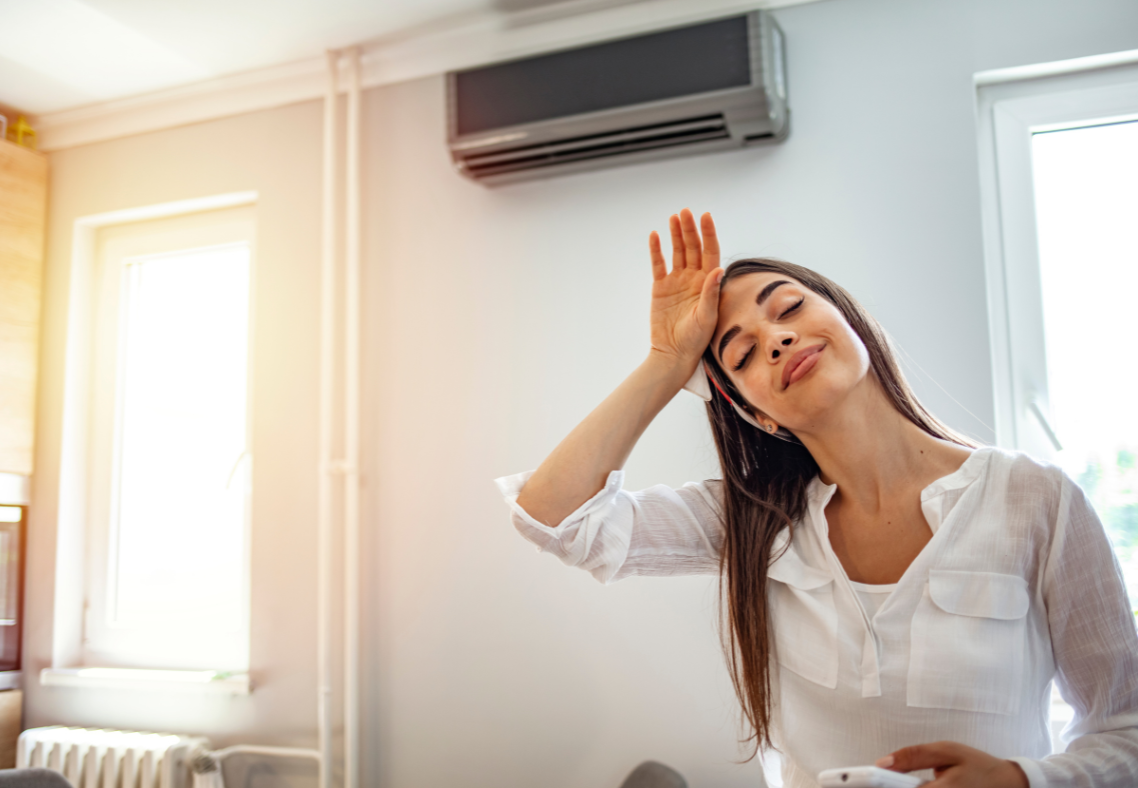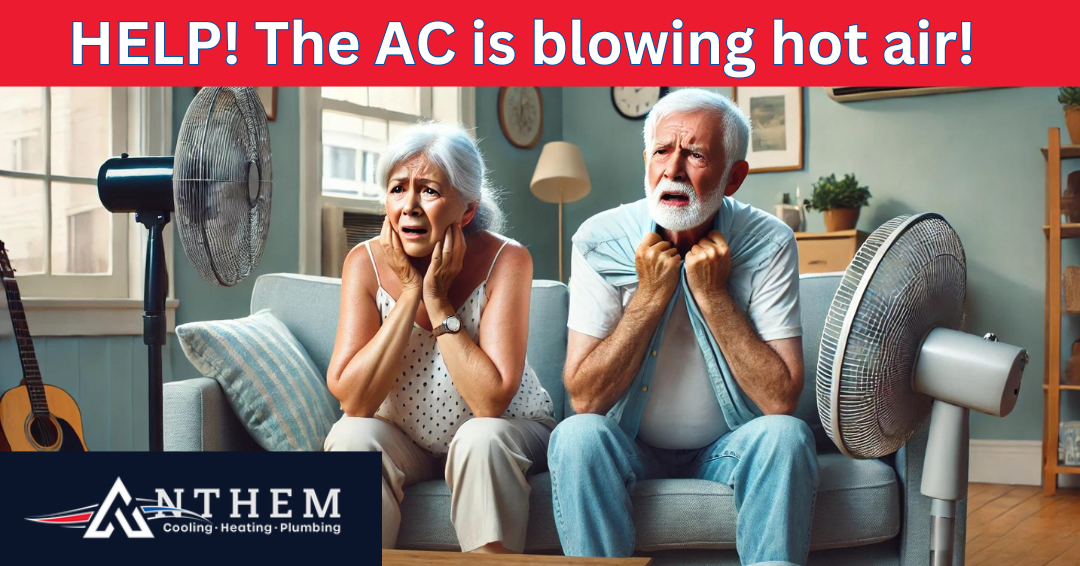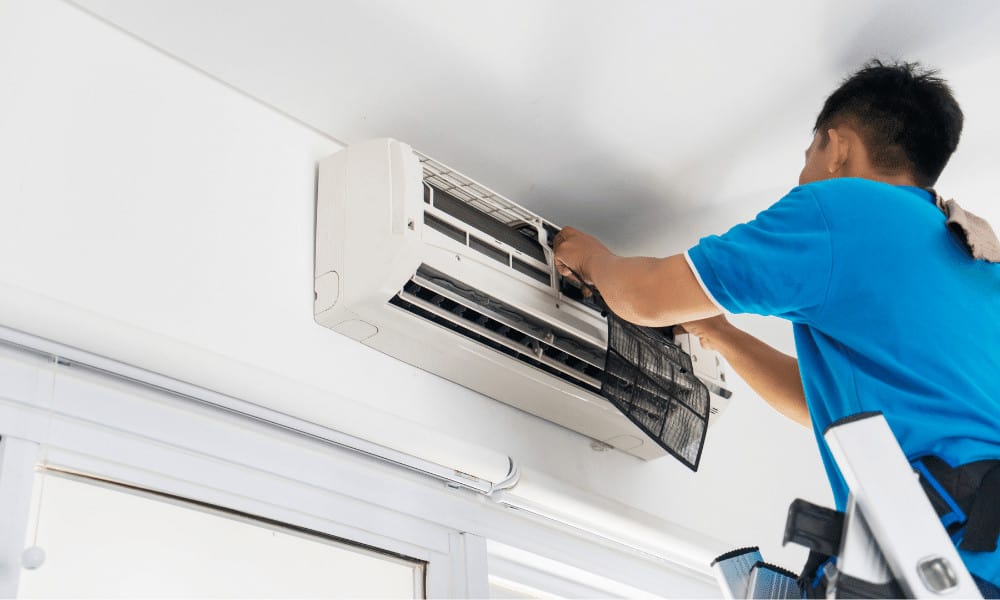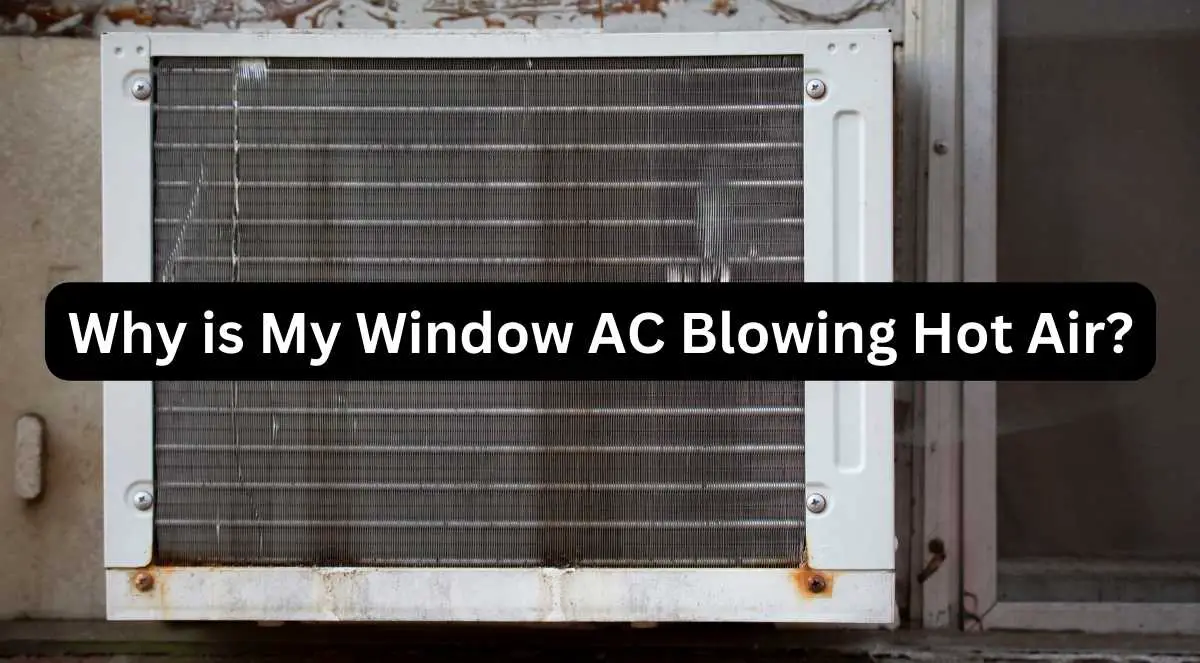Why Is My Ac Blowing Hot Air In My House

It's a sweltering summer day, and you're counting on your air conditioner to provide a cool oasis. But instead of refreshing air, you're greeted with a blast of hot air. This common household appliance failure is frustrating, but often, the issue can be diagnosed and even resolved with a few simple troubleshooting steps. This guide will walk you through the process, empowering you to tackle the problem safely and effectively. Remember, if you're ever unsure or uncomfortable with any step, it's always best to call a qualified HVAC technician.
Understanding the Problem: Why Hot Air?
Before diving into the troubleshooting, it's helpful to understand why your AC might be blowing hot air. Several factors can contribute, ranging from simple user errors to more complex mechanical problems. Here are a few possibilities:
- Incorrect Settings: The thermostat might be set to "Heat" or "Fan Only."
- Power Issues: The AC unit might not be receiving power.
- Dirty Air Filter: A clogged air filter restricts airflow, causing the system to overheat.
- Frozen Evaporator Coil: Restricted airflow can cause the evaporator coil (inside the indoor unit) to freeze.
- Refrigerant Leak: Low refrigerant levels can significantly reduce cooling capacity.
- Compressor Issues: The compressor, the heart of the AC system, might be failing.
- Condenser Fan Problems: The outdoor condenser fan might not be working, preventing heat from being released.
Step-by-Step Troubleshooting Guide
1. Check the Thermostat
This is the simplest and most common culprit. Ensure your thermostat is set to "Cool" and the temperature is set lower than the current room temperature.
- Verify the Mode: Make sure the system is set to "Cool" and not "Heat" or "Auto."
- Adjust the Temperature: Set the temperature a few degrees lower than the current room temperature and wait to see if the AC kicks on properly.
- Check the Fan Setting: Ensure the fan is set to "Auto" rather than "On." When set to "On," the fan runs constantly, even when the compressor isn't cooling.
- Battery Check: If your thermostat is battery-powered, ensure the batteries are fresh. Weak batteries can cause inaccurate readings and erratic behavior.
2. Inspect the Air Filter
A dirty air filter is a major cause of AC problems. A clogged filter restricts airflow, making the unit work harder and potentially causing the evaporator coil to freeze.
- Locate the Air Filter: The air filter is usually located in the indoor unit, either in the return air vent or inside the furnace/air handler.
- Inspect the Filter: Remove the filter and hold it up to the light. If you can't see light easily through it, it's likely dirty.
- Clean or Replace the Filter:
- Disposable Filters: Replace these with a new filter of the same size and type.
- Washable Filters: Wash the filter with mild soap and water, rinse thoroughly, and allow it to dry completely before reinstalling.
- Filter Rating: Consider using a filter with a Minimum Efficiency Reporting Value (MERV) rating appropriate for your system. Higher MERV ratings filter out more particles but can also restrict airflow if too high.
3. Check the Power Supply
Ensure your AC unit is receiving power. This involves checking the circuit breaker and the disconnect switch.
- Circuit Breaker: Locate the circuit breaker for your AC unit in your electrical panel. Make sure the breaker is switched "On." If it's tripped (in the middle position), flip it to the "Off" position and then back to the "On" position.
- Disconnect Switch: The disconnect switch is usually located near the outdoor condenser unit. It's a safety switch that allows you to cut power to the unit. Ensure the switch is in the "On" position. These switches often look like a pull-out handle or a standard light switch inside a weatherproof box.
- Safety First: Never work on electrical components with wet hands or in wet conditions. If you are uncomfortable working with electricity, call a qualified electrician.
4. Inspect the Outdoor Condenser Unit
The outdoor condenser unit is responsible for releasing heat from your home. Make sure it's free of debris and obstructions.
- Clear Debris: Remove any leaves, grass clippings, branches, or other debris that may be blocking the condenser coils. Use a garden hose to gently rinse the coils from the inside out. Do not use a pressure washer, as it can damage the delicate fins.
- Check the Fan: Ensure the condenser fan blades are not damaged and can spin freely. If the fan is not spinning, or is making strange noises, this indicates a more serious issue that requires professional attention.
- Vegetation: Trim back any vegetation that is growing too close to the unit, as this can restrict airflow. Allow at least 2-3 feet of clearance around the unit.
5. Check for a Frozen Evaporator Coil
A frozen evaporator coil restricts airflow and prevents the AC from cooling effectively. This is often caused by a dirty air filter or low refrigerant.
- Locate the Evaporator Coil: The evaporator coil is located inside the indoor unit (furnace/air handler).
- Inspect for Ice: If you can access the coil (usually behind a panel), look for ice buildup. Do not attempt to scrape or chip away the ice.
- Thawing the Coil:
- Turn Off the AC: Turn off the AC system at the thermostat and the circuit breaker.
- Turn on the Fan: Set the thermostat fan setting to "On" to circulate air and help melt the ice.
- Allow Time to Thaw: It may take several hours for the coil to thaw completely.
- Address the Underlying Cause: Once the coil is thawed, address the underlying cause of the freezing. This could be a dirty air filter (replace it!) or a more serious issue like a refrigerant leak.
- Professional Help: If the coil freezes repeatedly, or you suspect a refrigerant leak, call a qualified HVAC technician.
6. Check the Condensate Drain Line
A clogged condensate drain line can cause water to back up, triggering a safety switch that shuts down the AC compressor.
- Locate the Drain Line: The condensate drain line is a PVC pipe that exits the indoor unit and drains outside or into a floor drain.
- Check for Clogs: Look for any visible clogs or obstructions in the drain line.
- Clear the Drain Line:
- Wet/Dry Vacuum: Use a wet/dry vacuum to suck out any debris from the drain line. Attach the vacuum hose to the end of the drain line outside or at the floor drain and create a tight seal.
- Pour Vinegar: Pour a cup of white vinegar down the drain line to help dissolve any algae or mold buildup. Let it sit for 30 minutes, then flush with water.
- Use a Wire or Pipe Cleaner: Gently insert a wire or pipe cleaner into the drain line to break up any clogs.
When to Call a Professional
While many AC problems can be resolved with simple troubleshooting, some issues require the expertise of a qualified HVAC technician. It's crucial to prioritize safety and avoid attempting repairs that are beyond your skill level. Call a professional in the following situations:
- Refrigerant Leaks: Refrigerant is a hazardous substance, and handling it requires specialized equipment and training. Never attempt to repair a refrigerant leak yourself.
- Compressor Problems: The compressor is the most expensive and complex component of the AC system. Diagnosing and repairing compressor issues requires specialized knowledge and equipment.
- Electrical Problems: If you suspect an electrical problem beyond a tripped circuit breaker, call a qualified electrician. Do not attempt to repair electrical components if you are not comfortable working with electricity.
- Gas Leaks: If your furnace uses gas and you suspect a gas leak, evacuate the premises immediately and call your gas company.
- Complex Mechanical Issues: If you've exhausted the troubleshooting steps above and your AC is still blowing hot air, it's likely a more complex mechanical issue that requires professional diagnosis and repair.
- You're Uncomfortable: If at any point you feel uncomfortable or unsure about a repair, it's always best to err on the side of caution and call a professional.
Preventative Maintenance
Regular preventative maintenance can help prevent AC problems and extend the lifespan of your system. Consider these tips:
- Change Air Filters Regularly: Change your air filter every 1-3 months, depending on usage and air quality.
- Schedule Annual Maintenance: Have your AC system inspected and serviced by a qualified HVAC technician annually.
- Keep the Condenser Unit Clean: Regularly clean the outdoor condenser unit to remove debris and ensure proper airflow.
- Monitor Performance: Pay attention to the performance of your AC system. If you notice any unusual noises, smells, or performance issues, address them promptly.
By following these troubleshooting steps and prioritizing preventative maintenance, you can keep your AC system running efficiently and enjoy a cool and comfortable home all summer long. Remember, when in doubt, always call a qualified professional.










